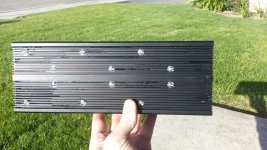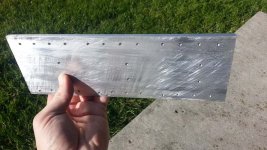Lebowski
10 MW
HighHopes said:its the exact same problem with current sensors. any analog signal that leaves the confines of the brainboard PCB will pickup noise.. sometimes a lot of noise that can even be ""common mode" noise since the motor is floating (with respect to the analog signals). at least with the throttle signal you can really filter it down a lot because it is slow moving signal & bandwidth or group delay is not a factor in EV application. the current sensor feedback is totally different in this regard. also, special consideration should be given to what ground reference you send with the analog signal.. like +5V, ground and signal, 3 wires that go to the analog throttle. are you sending brain board +5V & ground? this is like a big attractor to noise, direct to brain board ground. it is one of the reasons why i separate grounds into two groups, "digital ground" and "analog ground". and i treat these grounds differently. on different layers of PCB but tied together at one point.if I use the datalogging feature of the controller IC I can see there is a lot of noise on the throttle signal, and that it is somehow picking up a signal with the same frequency as the signals to the motor.
anyway.. as you go up in power, these little things matter because your margin of error gets tighter and tighter.
I'm an analog IC designer (actually working on an ADC right now), so, know exactly what you mean as the stuff you mention is also important on the scale of an IC...
And this is exactly where I found my throttle issue this evening. What happens (and what I suspected) is that, well, the ADC has a complex mux structure in
front of it to guide 9 possible input pins onto one ADC. What I suspected was that large scale signals on 3 channels (the backemf channels) were crosstalking to my
little throttle signal, but not on the PCB but inside the chip. So what I did is, before I measure the throttle I switch the 3 offending inputs from analog pins to
digital pins (as pins can be configured between being analog or digital inputs). This makes that they are removed from the ADC mux input and are replaced with
ground. And hey presto, clean throttle signal !!!! me happy
so it means that the mux inside the chip is not perfect but that there is a bit of crosstalk from one channel to the other. When not in use, best to re-define
the unused channels to digital input, so that they dont peep through the mux into the stuff you want to AD convert...
they don't mention this in the datasheet...




